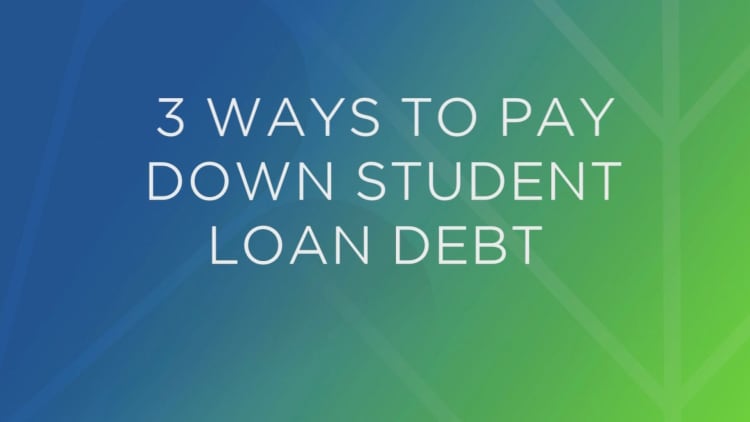An ambulance sits outside the US Capitol in Washington, DC, March 23, 2020, as the Senate continues negotiations on a relief package in response to the outbreak of COVID-19, known as the coronavirus.
Saul Loeb | AFP | Getty Images
The historic stimulus package Congress passed grants the millions of Americans with federal student loans a break from their payments for at least six months.
Under the $2 trillion bill, federal student loan borrowers won’t have to make a payment toward their debt until this October. Any interest that accrues during the suspension will be waived. And even if a borrower isn’t making payments during the reprieve, the time will still count toward the government’s forgiveness programs, if he or she is pursuing one, such as public service loan forgiveness.
The six-month break is automatic, meaning borrowers won’t need to contact their student loan servicer to request it.
Collection practices, such as seizing defaulted federal student loan borrowers’ tax refunds and Social Security checks, will also cease throughout the public health crisis, delivering relief to the roughly 9 million borrowers in default, or those who haven’t made a payment in a year or more. (The U.S. Department of Education also announced this week that it would refund any money it had already collected from past-due borrowers during the pandemic, estimating that would help some 830,000 people.)
There’s a provision in the stimulus package that says employers wouldn’t have to pay taxes on financial assistance they give to their employees for their student debt, though it only lasts until the end of the year.
More from Personal Finance:
Stashing cash? Savings interest rates sink
How to make your money work harder in the coronavirus crash
These banks are offering coronavirus financial aid
Plans to help the 45 million Americans with student debt amid the pandemic, many of whom find themselves with less or no income, have been mounting. The average monthly student loan bill is nearing almost $400.
President Donald Trump announced earlier this month that the government would be waiving interest on federal student loans throughout the outbreak. And U.S. Department of Education Secretary Betsy DeVos said later that borrowers could pause their bills for at least 60 days in a “coronavirus forbearance.”
Although the stimulus bill increases that reprieve to six months, consumer advocates and some Democrats have said that suspending payments was inadequate and they warned of a worsening crisis if there weren’t more relief measures.
Millions of student loan borrowers were already struggling to keep up with their monthly bills before the coronavirus pandemic. More than 1.2 million borrowers went into default in 2019, a 14% increase from the year prior.
“Pausing payments simply kicks the can down the road,” said Persis Yu, director of the Student Loan Borrower Assistance Project at the National Consumer Law Center. “We need to cancel student loan payments and ensure that balances go down so borrowers can make ends meet now and then recover along with the economy.”
For a brief moment, it seemed the pandemic could trigger the student debt forgiveness that has become a core platform among progressives. A plan unveiled last week by Senate Minority Leader Chuck Schumer, D-N.Y., and Sen. Elizabeth Warren, D-Mass., along with other Democrats, would have canceled at least $10,000 of the debt for each borrower. Another proposal would have raised that forgiveness amount to $30,000.
However, Republicans had apparently balked at the idea of a student debt jubilee.
“Democrats are trying to reduce student loans by $10,000,” Sen. Lindsey Graham, R-S.C., said Sunday on Fox News. “What the hell has that got to do with the virus?”



